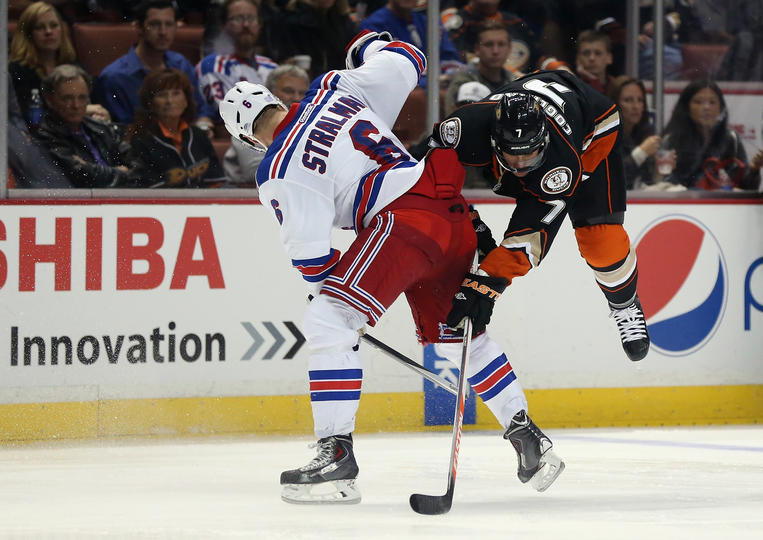When Anton Stralman rejected a three-year, $9 million offer from the Rangers over the weekend, a lot of fans were outraged. This would be the fourth Ranger this season to “reject a perfectly good offer.” Henrik Lundqvist’s negotiations took a while before he re-signed, as did Dan Girardi’s. Ryan Callahan’s never materialized, and he was shipped to Tampa Bay at the trade deadline.
Unrestricted free agency is a tricky beast. Market value is generally determined by comparable contracts, but the player has all the leverage. As we saw with Cally, teams will be willing to give him seven years and $6 million, which makes his value higher. It’s best to view this objectively, which is tough considering how much we all love the Rangers.
When it comes to Stralman, and in particular defensemen who are not relied upon to produce offensively, market value is a little more difficult to determine. Using point production isn’t the best indicator of value, so we have to be a little more creative.
Capgeek has a comparables tool we can use to find comparable contracts to Stralman. It’s pretty good, and the results give us a starting point. I used Keith Ballard, Chris Butler, and Mark Stuart as comparables from a point production standpoint. Their peripherals are all pretty similar to Stralman’s as well, but Stralman drives a lot more puck possession than all three here.
And therein lies the conundrum. Teams that use Corsi as an indicator of value see where Stralman lies on the spectrum. For those wondering: He’s #1 in the league at driving puck possession at 5v5 (based on minimum 48 games played, using relative Corsi to account for team effect).
Now, using relative Corsi on its own is flawed logic. We need to take into account quality of competition faced and zone starts. Stralman still starts over half his shifts (50.7%) in the offensive zone, which certainly helps his possession numbers. His QoC numbers represent top-four minutes, which is consistent with his deployment.
I made an attempt to find usage comparables for Stralman by taking those with puck possession above a 4.5% Corsi relative, over 50% zone starts, and over 28% ToTm% QoC. Unfortunately that left us with just a pair of comparables: James Wisniewski and Victor Hedman. Stralman doesn’t compare well to these two since they actually put up offensive numbers.
Stralman is a really interesting case. He should be producing more based on his ability to control puck possession, but he simply doesn’t do that. His 34 point season seems to be a blip on the radar and not consistent with his career production.
So how does all of this determine his value?
I’d value him higher than where Capgeek has his comparables, but less than his #fancystat comparables. His numbers are nice, but they aren’t translating to the score sheet, and that is the bigger problem. It certainly affects his value on the ice and will affect his contract. I don’t think Stralman is worth more than the $3 million he rejected, but it wouldn’t shock me to see him get more on the open market. I’d venture a guess that he gets three or four years around $4 million a year.
Share:


